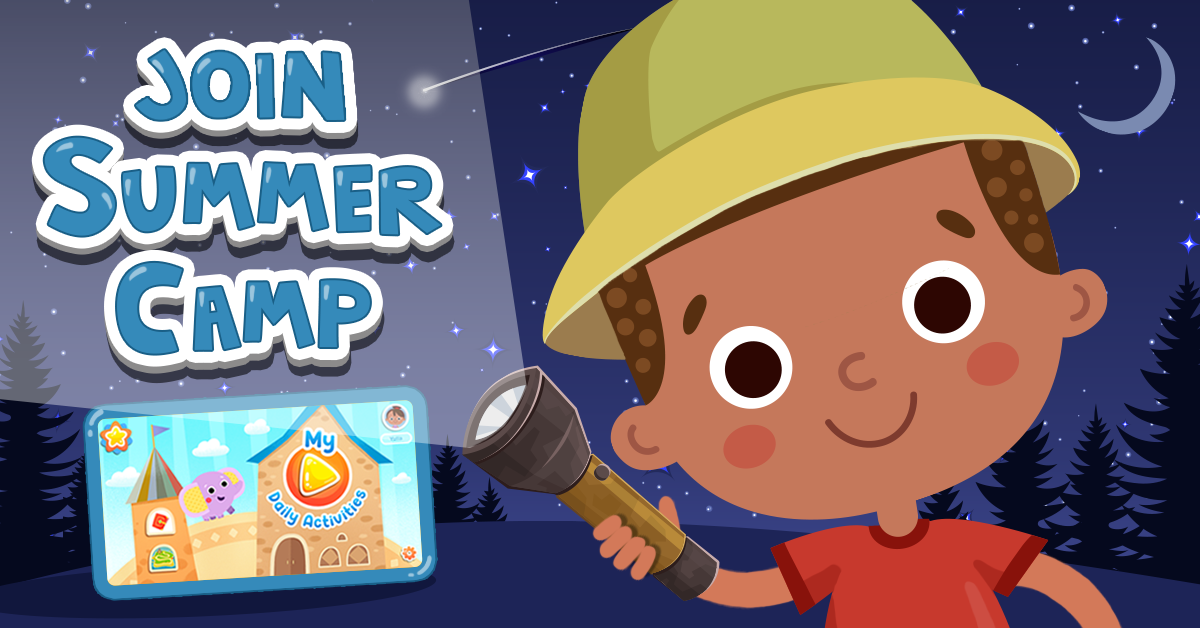Animal Classification Normal Plants and Animals Worksheets for Ages 5-8
6 filtered results
-
From - To
Discover engaging "Animal Classification: Normal Plants and Animals Worksheets" tailored for children aged 5-8. These printable worksheets from Kids Academy help young learners explore the fascinating world of plants and animals, promoting essential science skills. With colorful illustrations and interactive exercises, children can easily grasp key concepts of animal classification and the characteristics of different plants. Perfect for both classroom and home activities, these worksheets encourage curiosity and a love for nature while developing critical thinking and observation skills. Turn learning into an adventure with our fun and educational resources, designed to make science enjoyable and accessible!
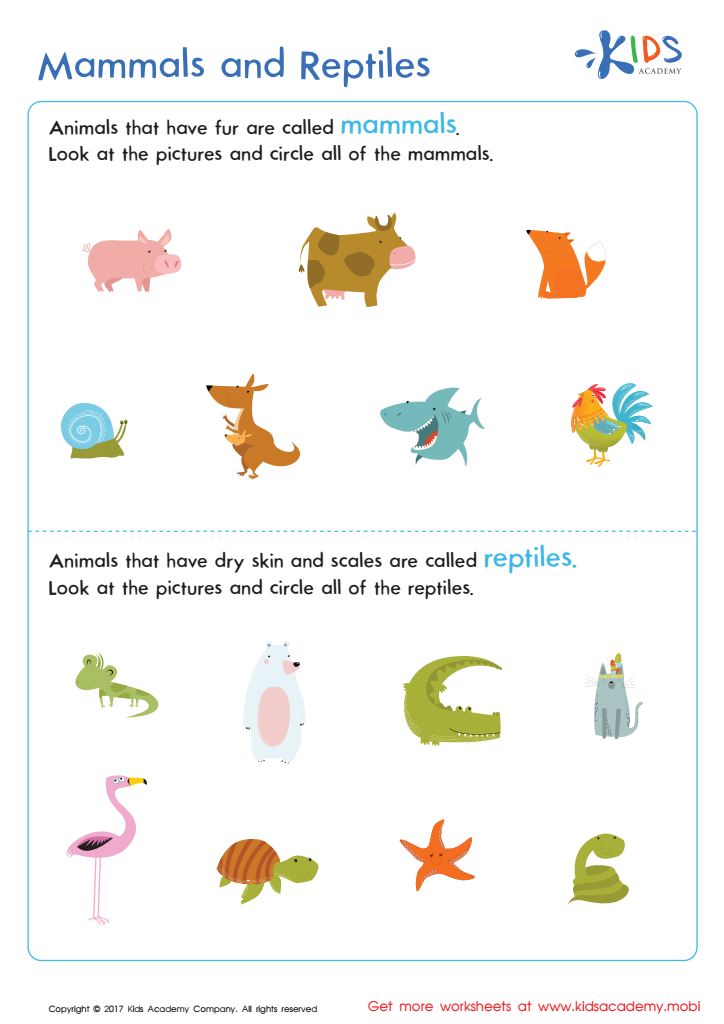

Mammals and Reptiles Worksheet
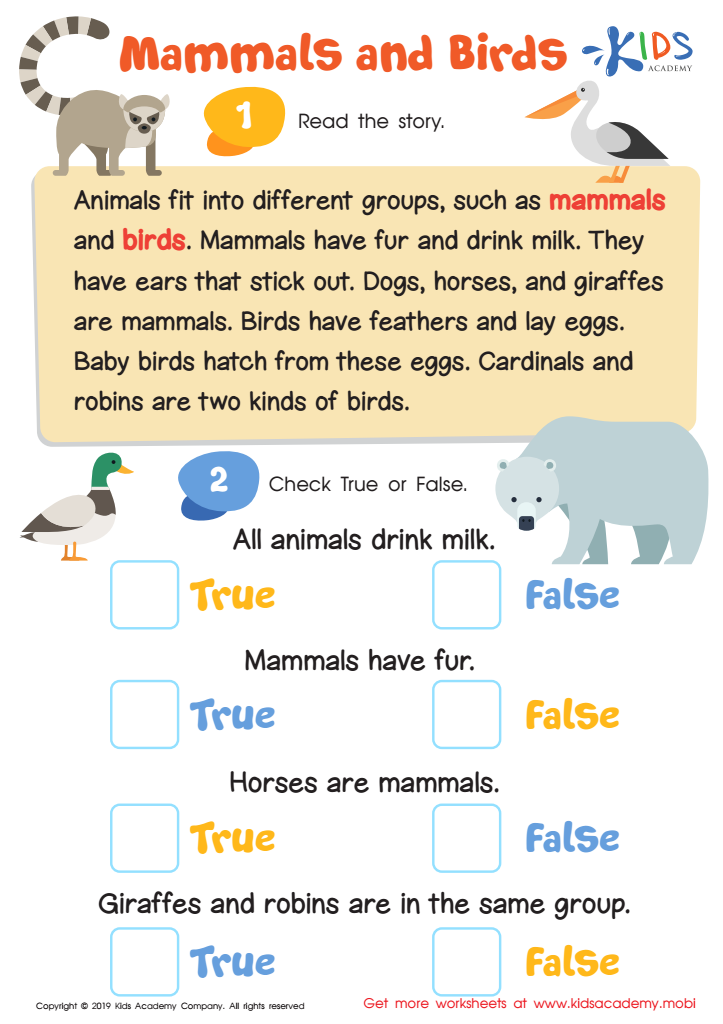

Mammals and Birds Worksheet
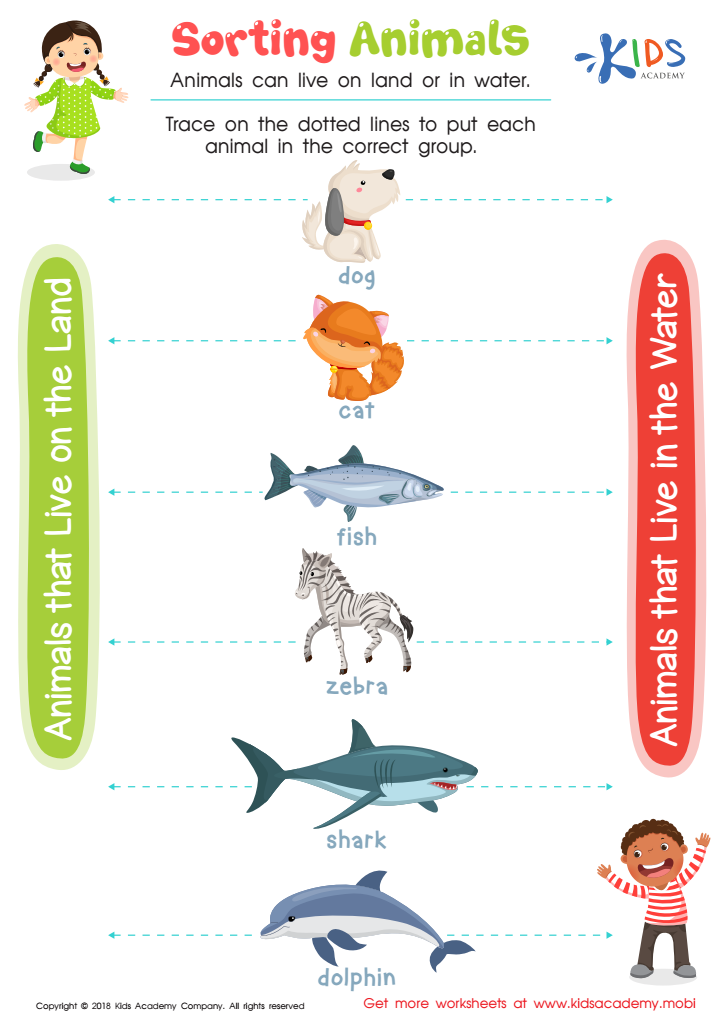

Sorting Animals Worksheet
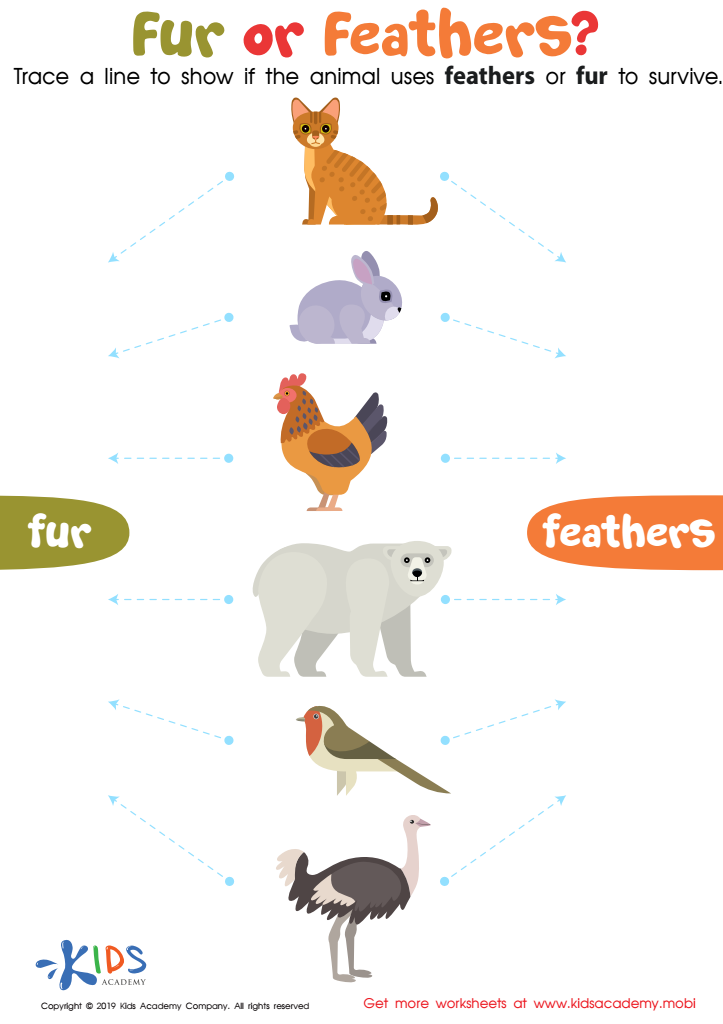

Fur or Feathers? Worksheet
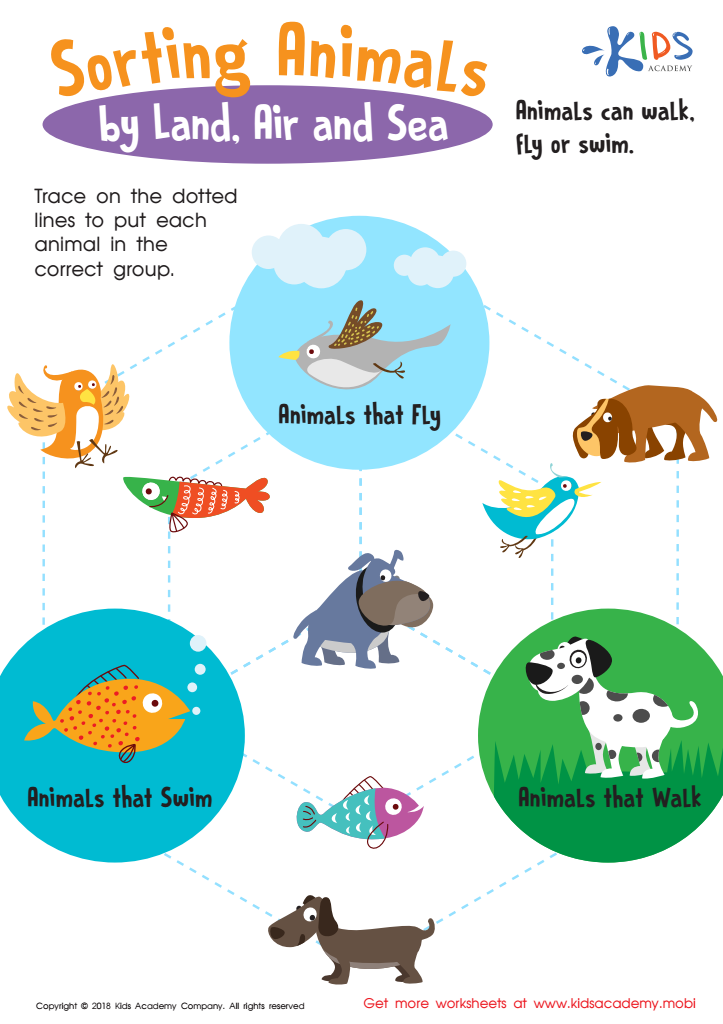

Sorting Animals by Land, Air and Sea Worksheet
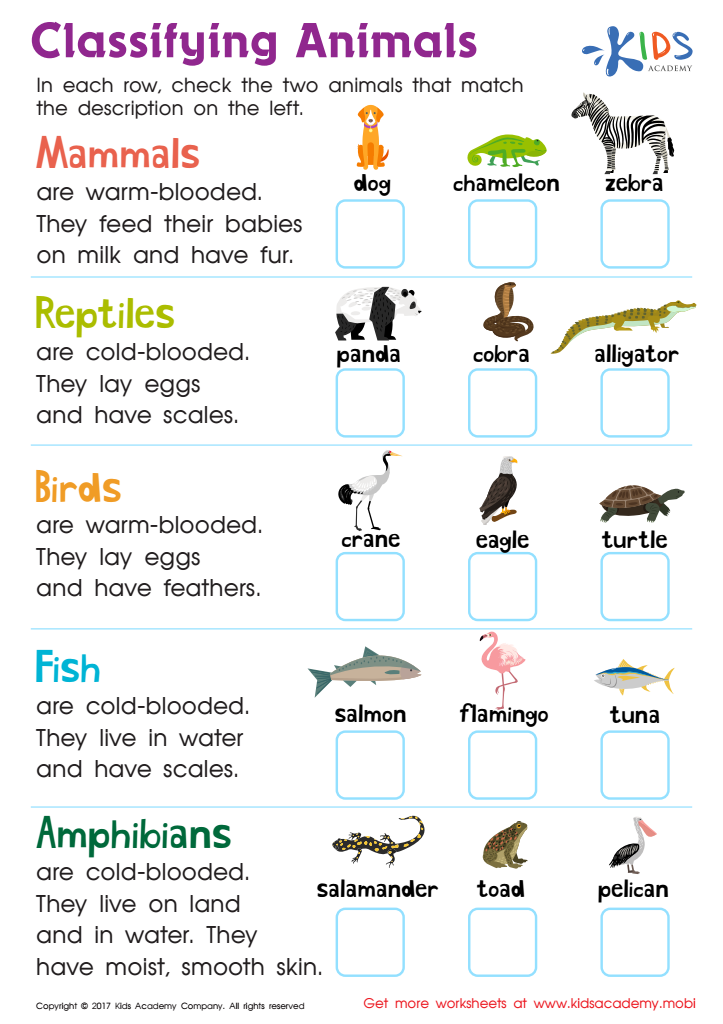

Classifying Animals Worksheet
Parents and teachers should care about teaching animal classification and normal plants and animals to children aged 5-8 because it lays a foundational understanding of biology and the natural world. At this critical developmental stage, kids are naturally curious and eager to learn about their surroundings. Introducing them to concepts like animal classification helps develop their ability to categorize and organize information, a critical cognitive skill.
Understanding the various types of animals and plants fosters a sense of connection and respect for nature. It can ignite a lifelong interest in science and environmental stewardship. Additionally, learning about the different characteristics of living organisms aids in vocabulary building and creates a deeper appreciation for diversity in the natural world.
Engaging in activities such as sorting animals into groups or exploring different plant species can also improve motor skills and emotional growth. Teamwork on classification activities teaches kids cooperation and communication. For parents and teachers, these activities offer valuable opportunities to bond with children over shared discoveries.
Incorporating lessons on classification and nature helps create well-rounded, knowledgeable, and environmentally conscious individuals. Investing time in this basic educational building block can inspire curiosity, responsibility, and a love for learning that extends far beyond the classroom.
 Assign to My Students
Assign to My Students





